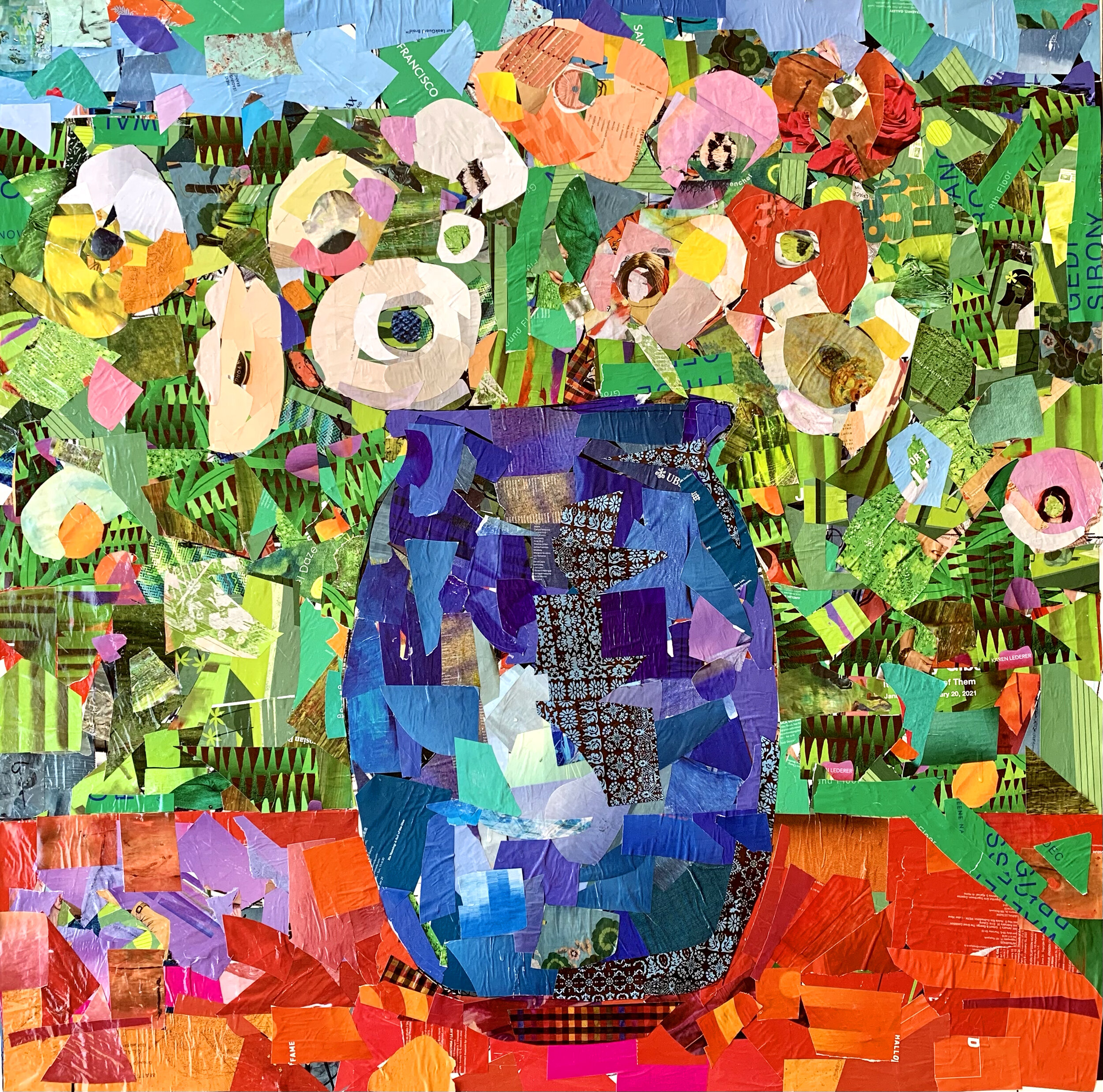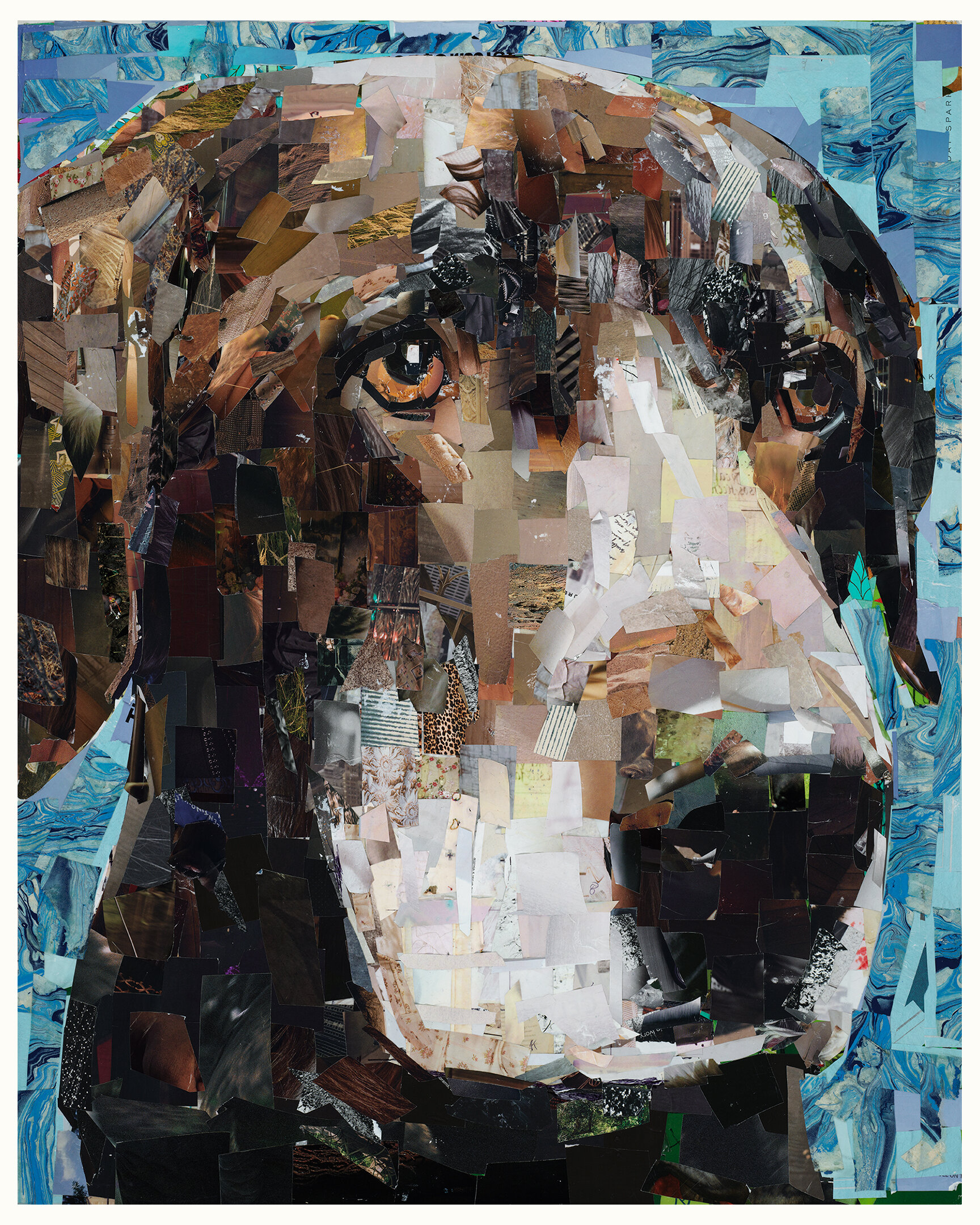The Color Collage Workshop: An Interview with Samuel Price
Art by Samuel Price
You might call Samuel Price the glossy paper wizard. The San Francisco–based artist takes old magazines and—marrying a grid system with an impeccable eye—transforms those cast-offs into inspired collages: of peonies and parrots, fall foliage and French bulldogs. Now, Samuel, who’s particularly renowned for his dog portraits, plans to share his secrets with readers in The Color Collage Workshop, so they can discover the joy of collage-making for themselves.
A few weeks ago, we launched a Kickstarter campaign to get the word out about The Color Collage Workshop, to supplement the budget, and to build community around this beautiful volume, published by Quarto Books. We just can’t get enough of Samuel and his work and, recently, we sat down with him to talk about the Jack Russell terrier and chocolate Lab that changed his life, finding Zen through art, and why this book will be like circuit-training for your creativity muscles.
How did you first start doing collage?
SP: I was someone who wanted, right out of high school, to go to art school. I was doodling and drawing and painting and experimenting, using paper and magazine clippings to build up my mixed media paintings. Around that time, I stumbled upon the work of Chuck Close, who was doing these amazing full-face paintings of people with just X’s and O’s, using this grid system. It really clicked with me.
Then, one thing led to another: the drawing and painting stopped, and the collaging became more and more prevalent in what I was doing. I used that grid technique as a platform to create photo montages in square form. I was so confident with what I had just started, I did a collage portrait of James Baldwin when I was 19 years old. I sold that picture the day it went up on the wall, in this little coffee shop in Santa Rosa. And that was it. I was really inspired. I realized I could do this, and I was just at the tip of the iceberg with what I was capable of doing.
Art by Samuel Price
When and how did you first start doing portraits of dogs?
SP: I was working in a hospital, and I got a commission from a nurse colleague. She had a very sweet dog whom she loved dearly, Floyd. He passed away unexpectedly, and she was devastated. She asked me if I would consider doing a portrait of him. He was an old Jack Russell terrier, with white fur and a big open mouth with teeth and a tongue, and lots of lines in his neck. It was a challenging picture, but I knew that if I could focus on the eyes of the dog, the rest would take care of itself.
I took the finished artwork to her at work, and she was thrilled; she cried when she saw it. She showed all her friends, then it was instantaneous—I had more commissions right away, and I became the dog artist from that day on.
Art by Samuel Price
What do you love about collage?
SP: When you look at a collage up close, you can see all these little things, words and elements that the artist put in there. There’s so much room for the detail, and it all just exists inside the magazine! You just have to go look for it. It’s like reading a book, rather than watching TV. So, working on collages is very cool and relaxing; it’s therapeutic. I really love having a conversation with someone or listening to a podcast and doing art. I don’t get too worked up about the finished product, because every little square is important, and you’re just finding it.
What’s your favorite collage you’ve ever worked on, and why?
SP: My picture of my dog, Buster. I got Buster as a rescue dog later in life, so I only had a few years with him, really. He was a beautiful chocolate Lab—very regal kind of face, with chocolatey-brown yet silver fur. His health kind of declined, and I knew we were gonna lose him. He would never let me photograph him, but this one day, he sat down with me on the front porch. It was just like a couple of old buddies, sitting down together. I got two or three photos then that were, like, perfect. The collage I made, based on those pictures, has a special place for me—remembering that time of him.
Art by Samuel Price
Why did you decide to write this book?
SP: This book, for me, is about empowering people, and showing them, ‘This is something you can do, too.’ I think, sometimes, people just tell themselves that they either are or are not artists. Collage can break through that. It’s not like you gotta go learn how to mix paint and linseed oil—this type of collage can be done with stuff you have lying around your house. If people knew about this process and this technique, I think they could inspire themselves!
Art by Samuel Price
I understand that your book will have a number of different lessons for readers. Which one would you recommend that people start with?
SP: I’m really trying to create this kind of circuit-training for people. We’re gonna be doing some projects focused on shapes, then we’re gonna get into brindling and fading of colors. There are a lot of artists I reference, like Frank Stella, who works in geometric shapes, and Andy Warhol, where maybe we’re just working with flat colors. So, you’ll build your skills, develop these kinds of subtle techniques, and get confidence as you grow. Then the master class is the people portraits and the pet portraits; that’s the highest level that you can achieve.
My goal is, no matter what your background or your skill level is, you’ll be able to jump in somewhere—whether it’s right in the beginning of the book or in the middle, or whatever speaks to you—and that you start having fun, building confidence, and you’ll want to continue to do more projects.
If you could impart one thing to your students, what would it be?
SP: Perfectionism can give you analysis paralysis. I tell my students to try to put it to the side. Because people just kind of jump ahead, thinking, ‘Oh, this is shit. It’s not gonna be good.’ It’s like trying to edit the book before you’ve even written the manuscript. And if you can, instead, get granular with the art you’re making—forget about the final result, forget about this square being the perfect square—and just do your best with each square, one square at a time, the final result will work out for itself.
Art by Samuel Price
To join the community supporting this book, find this project on Kickstarter. Look for the book on shelves Summer 2022.






